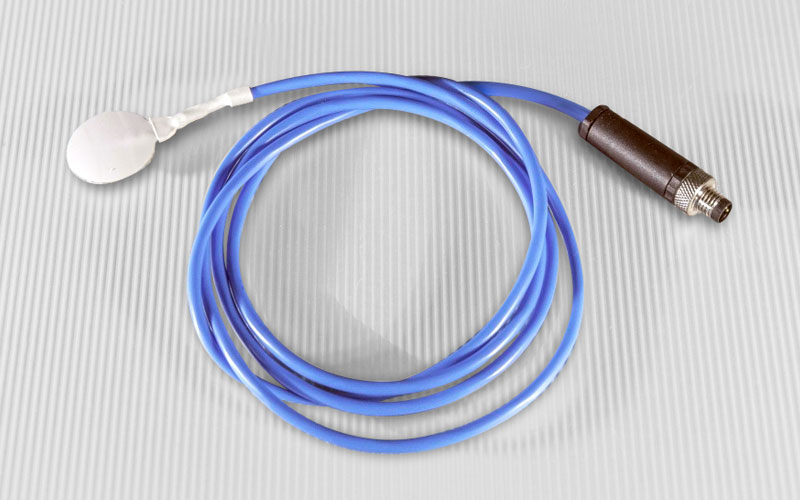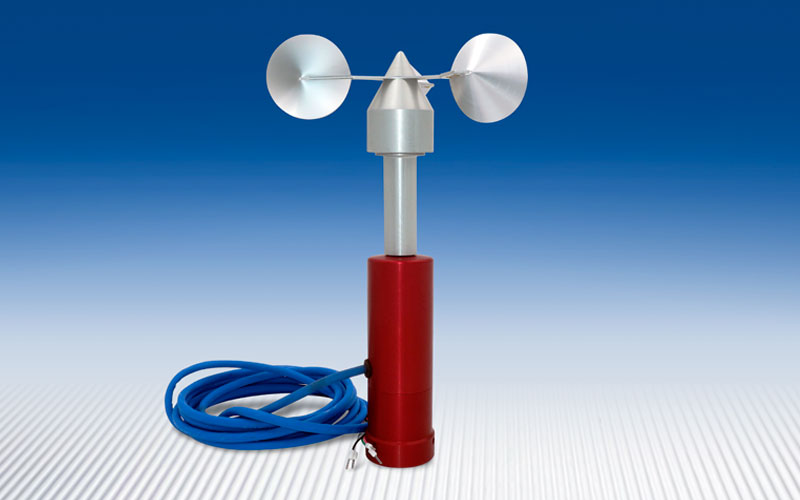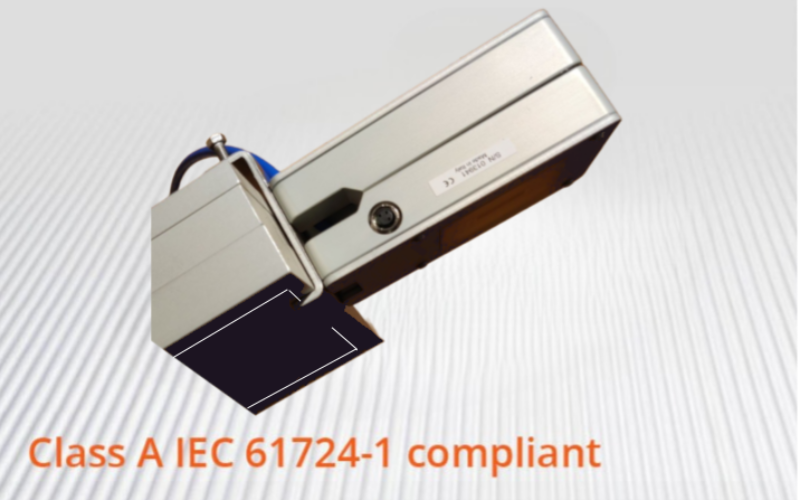Sunmeter Pro bifacial irradiance sensor – Albedometer
Last update
Sunmeter Pro bifacial irradiance sensor – Accurate, Reliable Bifacial Photovoltaic Pyranometer
Sunmeter PRO bifacial irradiance sensor is a combination of two digital photovoltaic pyranometers (or silicon irradiance sensors) for calculating bifacial photovoltaic plant performance with a high degree of precision and reliability.
The sensor simply consists of two Sunmeter Pro photovoltaic pyranometers in which the upward facing pyranometer measures the incoming global solar radiation and the downward facing pyranometer measures the reflected global solar radiation.
This bifacial irradiance sensor helps in measuring the performance of the bifacial PV module’s as well as helps in the calculation of the Solar albedo. Solar albedo which is the ratio of the reflected radiation to the global radiation. It mainly depends on the properties of the surface and the directional distribution of the incoming solar radiation.
Solar albedo = reflected radiation/global radiation
Bifacial PV module has a glass panel at the back, while a normal PV module has an opaque metal back. Therefore Bifacial PV module can collect radiation and generate electricity from both front and back of the PV module.With the surging applications of bifacial modules, This kind of albedometers are very essential for the to calculate performance of bifacial PV modules with more accuracy.Measuring performance of Bifacial PV module gainBifacial solar cells enable the absorption of light also by the rear side of the cell. Hence increasing energy yield of a bifacial module, Yield bifacial (Ybifi) compared to the energy yield of a monofacial module Yield monofacial (Ymono) installed under the same conditionsis given below,
Bifacial gain = (Ybifi -Ymono) / Ymono
In order to measure the albedo (reflecting radiation) of a surface, the instrument used is called albedometer. Most common application of this is to measure earth’s surface reflection.On the contrary for PV sector, photovoltaic pyranometers are most recommended to use. In the case of meteorological studies thermopile pyranometers are more suitable.
More information
Its monocrystalline silicon cell is laminated with glass for photovoltaic modules and E.V.A. like a micro PV module. It has additional stabilization processes and tests to minimize measurement drift over time.
The cost includes a recalibration service after one year as well as the immediate replacement of the irradiance sensor if tolerance exceeds 3.5%.
The Sunmeter PRO is easy to install and use. Compared to the Class A thermopile pyranometer, it provides a more adequate measure for the calculation of the P.R..
Every Solarimeter cell has been calibrated by a stabilized PV reference cell at the Dakks accredited ISFH.
This irradiance sensor is available in two models:
- the “complete model” which provides for Analog and Digital output.
- the digital output only model.
Note: the terms irradiance sensor, photovoltaic pyranometer, reference cell and solarimeter are interchangeable. On this site we will use photovoltaic pyranometer. To learn more click here.
Key features
- Monocrystalline silicon cell
- Inbuilt TZOS® technology for measurement
- IEC 60904-2 compliant, RS485 standard Modbus RTU for reliable signals up to 500m from the data-logger
- IEC EN 61724-1 compliant (standard for PV Monitoring Systems)
- Uses temperature compensation for more accurate reading.
- Performance decline of less than 1.5% per year.
- Analog and digital output, compatible with most of data-loggers.
- Higher weather resistance.
- IEC EN 61215 par.10,11,12 compliant (product aging).
- Mounting brackets for easy installation.
- High calibration of temperature data for an error less than 1%
- FREE 12 month recalibration service included.
Datasheet
| NAME | SunMeter PRO bifacial irradiance sensor | |
| PRODUCT | solar irradiance sensor with monocrystalline silicon cell (photovoltaic pyranometer) | |
| REFERENCE STANDARDS | IEC 60904-2; 60904-4; 60904-10; IEC EN 61215, EN 61215 | |
| OUTPUT | Digital and Analog (when ordering, specify the model) | |
| Calibration | Made through a double adjustment for comparison with a PV reference cell calibrated by the Dakks accredited ISFH Institute. | |
| Input range | Irradiance: | 0 ÷ 1500 W/m2 (IEC EN 61724-1 compliant) |
| Spectral range | 0.3 μm ÷ 1.1 μm | |
| Temperature | -30 ÷ +90 °C | |
| Output | Voltage(1) | 0 ÷ 10 V, 0 ÷ 5 V (optional kit for 0 ÷ 40 mV) |
| Current(1) | 0÷ 20 mA, 4÷ 20 mA | |
| Digital | RS485 standard Modbus RTU | |
| Output precision | Irradiance | ≤± 2% |
| Temperature | ≤± 0.5°C | |
| Supply | 9 ÷ 30 Vdc protected from reverse polarity and short circuiting | |
| Encapsulation | Laminated with glass for photovoltaic modules, E.V.A. UV resistant (see IEC 60904-2) | |
| Casing | Aluminum with screw-clamp for mounting | |
| Wire | 50cm UV-resistant casing. | |
| Connectors | Standard M12 8 pin male IP67 code | |
| Dimensions | 114x70x22mm without the fixing clamp | |
(1): The analog output is present only in the models on wire # 6 of the SM1 PRO. Wire # 6 can be configured as voltage or current output.
(2): Digital RS485 is always present on wire n#4 and n#5
Accessories
-
Temmeter
-
USB/RS485 interface cable
-
USB/MICRO-USB smartphone adapter
-
Sm configuration for Android smartphone and tablet
SMCONFIG allows you to configure Sunmeter in the field from your Android smartphone. It is no longer necessary to bring the Sunmeter back to the laboratory for configuration.
The software allows you to:
- configure Sunmeter.
- make a diagnosis of the basic functions.
- log irradiance, temperature and wind (Sunmeter Wind only) readings.
The software is available for free on this page in the downloads area. In addition to the software it is necessary to have a USB / RS485 converter, an adapter cable between microUSB/USB and a female connector M12 4 pin for Sunmeter.
In the Download area you can find a wiring diagram of our cable that connects Smartphone/Tablet or PC with the irradiance sensor, it takes and transforms the voltage present on the USB (Price on request). Alternatively, it is possible to use other cables with external power supply (9V battery).
Compatibility
| Producer | Datalogger / Inverter model | |
|---|---|---|
| Huawei | SmartLogger 1000/2000/3000 (Table 8.2 of Huawei SmartLogger3000 User Manual) | |
| Fractalgarden | ErmesLog | |
| GreenPowerMonitor | GPM Datalogger | |
| Higeco | GWC Datalogger | |
| GH Solutions | M501-502 | |
| SMA | Data Manager M | |
| SolarEdge | SE Gateway Datalogger* | |
| Growatt | ShineMaster Datalogger | |
| Kaco | Kaco Inverter | |
| Sungrow | Sungrow Datalogger | |
| GoodWe | EZlogger | |
| Encombi | ECpv – ECcube | |
* only for the complete model (Analog & Digital output) of Sunmeter because SE Gateway Datalogger is a datalogger with Analog Input
Downloads
Possible Combinations
| Cod. | Irradiance sensor | Calculated value | Output | Associated sensors | ||
|---|---|---|---|---|---|---|
|
Sunmeter Pro |
|
|
|||
|
Sunmeter Pro |
|
|
 |
||
|
Sunmeter Pro (and SM Pro Counter, SM Pro Sunspec) |
|
|
 |
or |  |
|
Sunmeter Pro Counter |
|
|
 |
||
|
Sunmeter Pro Wind |
|
|
 |
||
|
Sunmeter Pro Wind |
|
|
 |
 |
|


